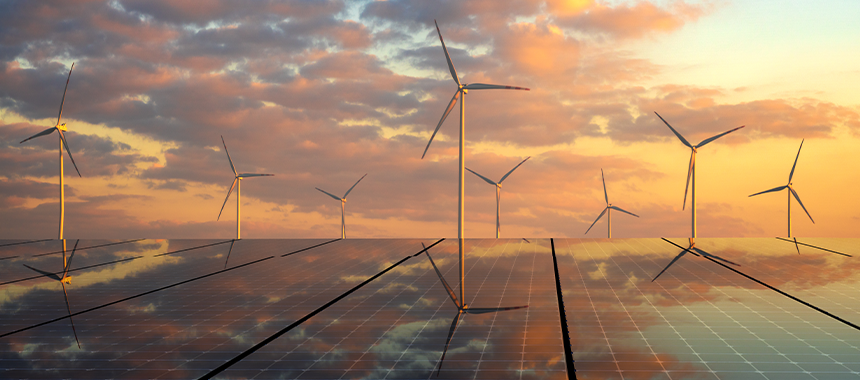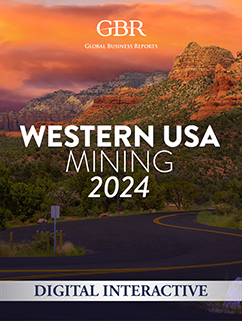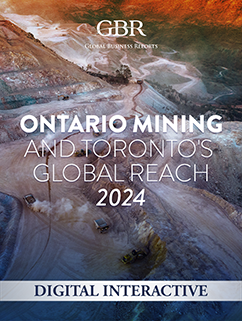Green Transition and the Role of the US: Pushing for new policies, but permitting remains slow
RELATED PUBLICATION
ARTICLES FROM THIS PUBLICATION
Green Transition and the Role of the US

Image by Mike Mareen at Adobe Stock
As the transition to clean energy swiftly advances, critical minerals have become a focal point in global discussions. For the US, as the leading economy in the world, ensuring a supply of these minerals is crucial not only to achieve its decarbonization goals but to reduce reliance on competitors such as China.
The ‘green metals’ are beginning to resemble oil in terms of their geopolitical significance. Several countries, including the US, are taking protectionism initiatives and policies to either nationalize, lower, or ban exports of these minerals. Chile, for instance, has attempted to acquire equity stakes in its lithium mines, and Namibia and Zimbabwe have imposed bans on raw lithium exports. The DRC has proposed export quotas for cobalt, and Indonesia has prohibited raw nickel exports to encourage investment in nickel processing within the country.
In terms of leadership, an asymmetric advantage exists for countries possessing resources and those controlling the supply chain, exemplified by China. Goldman Sachs Research indicates that China accounts for approximately 85 to 90% of the global rare earth elements (REEs) mine-to-metal refining. China also refines 68% of the world's cobalt, 65% of nickel, and 60% of lithium for EVs.
Washington has acknowledged the US' exposure to supply chain disruptions and vulnerabilities stemming from critical minerals, and thus the Biden Administration passed the Inflation Reduction Act (IRA) in August 2022 to strengthen the supply chain for metals and incentivize production of EVs. Lawmakers also passed the Bipartisan Infrastructure Investment and Jobs Act, which will fund a federal study of the use of abandoned mine lands and mine waste for critical mineral extraction. The CHIPS & Science Act to fund microelectronic research and manufacturing became the third legislative piece of a new industrial strategy. "Both political parties acknowledge the critical need for more secure mineral supply chains. The pandemic and events like the Russian invasion of Ukraine, ongoing issues in the Middle East, and China's global dominance in mineral supply chains have certainly heightened concerns and highlighted our vulnerability to unstable or hostile countries," commented Mark Compton, executive director of the American Exploration & Mining Association (AEMA).
However, are national policies enough? In the current era of globalization, to establish a fully integrated supply chain to fulfill its mineral-related goals Washington needs friends. The US government has strategically collaborated with its closest allies through various means, including bilateral cooperative agreements with countries such as Japan and Australia, a Memorandum of Understanding with Mongolia, and broader partnerships like the G7-backed Partnership for Global Infrastructure and Investment (PGII) to develop clean energy supply chains. Additionally, initiatives like the Minerals Security Partnership focus on producing, processing, and recycling critical minerals. Compton continued: “Relying solely on allies for our needs is no longer a viable strategy. While complete mineral independence may be challenging, responsibly utilizing our domestic resources whenever feasible is imperative”.
If mineral nationalism is the solution, the US faces substantial challenges, with one of the most critical being the permitting process. To stimulate domestic mineral production, the US needs to eliminate self-imposed obstacles and expedite numerous projects in the permitting stage, instead of resorting to a political discourse filled with empty words advocating for green economies while simultaneously imposing control and regulations. "Despite discussions about permit reform, tangible actions have yet to materialize. This extended timeline increases the risk associated with projects in the US, diverting foreign investments to countries like Canada and Australia or regions with questionable environmental practices such as Congo or Indonesia," commented Chris Summers, CEO of Burgex.
While the entire mining value chain in the Western US has been advocating for a more streamlined permitting process, there is unanimous agreement that this should not entail lowering environmental standards. Mark Compton questioned why, for instance, the FAST-41 designation granted for South 32's Hermosa project should not be applied to all mining projects, and he raised the point in the Senate: "If we can expedite permitting for these projects without compromising our high environmental standards, it logically follows that we should apply such efficiency to all projects. We should be expanding this permitting system of increased transparency and agency coordination, not limiting it."
Copper, closer to being listed as critical
According to the USGS, for a mineral or commodity to be categorized as `critical,´ it must meet specific criteria: It should be essential to the economy and national security, produced from a supply chain vulnerable to disruption, and serve a crucial role in the manufacturing of products whose absence would have substantial consequences on domestic economy and security. Copper fulfills all three: It is the cornerstone of the green energy transition, copper is the second most widely used material by the US Department of Defense, and US production is struggling to meet with demand. However, it is still not listed as a critical mineral.
The decision of the US Department of Energy (DOE) to include copper for the first time in its critical material list, published in July the 2023 Critical Materials Assessment, was therefore well received, but we must consider the difference between critical minerals and critical materials. While the DOE defines the critical material list, it is the USGS that designates the critical minerals list, and many claim that the USGS copper evaluation is out of date. The Copper Development Association (CDA) slammed the USGS for “misleading” and denying a bipartisan request to add copper to its critical mineral list. Including copper could result in enhanced scrutiny from the USGS regarding marketing trends and reserves and could potentially lead to streamlined permitting processes, facilitating domestic production. “For us, the key would be the USGS adding copper to their critical minerals list. This would recognize the need for processing copper and finding and producing more to meet clean energy targets,” commented Graham Richardson, CFO of Faraday Copper.
Not being currently listed as a critical mineral, copper does not qualify for the Inflation Reduction Act (IRA) tax credits.
Same deposits, new tricks
According to the Society for Mining, Metallurgy & Exploration (SME), the US needs 359 additional mines across all commodities to meet the needs of the clean energy transition. However, there is a lack of everything: new mines, good deposits at the surface, and labor, the perfect combination for failure. In this context, technology can help. VerAI Discoveries is an AI-based mineral asset generator dedicated to sourcing critical minerals essential for the energy transition. The company owns 73 exploration projects for critical minerals in eight portfolios of different commodities: Three portfolios, each focusing on cobalt, nickel, and lithium in Ontario; a copper portfolio in Arizona, which is undergoing advanced review and commercial discussion with several majors; and a gold-silver portfolio in Nevada, where VerAI is seeking a partner; and two portfolios in South America (in Peru and Chile). The lack of success in project exploration and moving to production is disconcerting, according to Yair Frastai, co-founder and CEO of VerAI: "Roughly one in every 1,000 projects successfully transitions into a functioning mine, and existing exploration methodologies fall short in effectiveness, economic viability and scalability," he explained.
According to Michael Rowley, president and CEO of Stillwater Critical Minerals, all apparent deposits have already been identified in today's context—a problem exacerbated by drilling costs at unprecedented levels. The elixir? "Integrating geophysics, AI, and machine learning becomes invaluable in uncovering previously concealed resources," he said.
ASTERRA, an Israeli-American company, is also actively involved in exploring critical minerals through its proprietary technology. The company focuses on employing Earth observation techniques, specifically through Synthetic Aperture Radar (SAR) wavelengths. While its initial focus was on providing Earthworks, a solution geared towards supporting risk and disaster prevention by analyzing underground soil moisture to monitor tailings behavior, ASTERRA has recently developed a model for pinpointing mineral deposits with enhanced precision and speed. "Instead of collecting multiple samples over several years, we have streamlined the process into a much shorter timeframe. This approach allows us to validate satellite findings, swiftly resulting in significant advantages," commented Elly Perets, the company's CEO. ASTERRA’s initial case study involved collaboration with ACME Lithium, focusing on its Fish Lake project in Nevada.
Ivanhoe Electric, an exploration company that owns the Santa Cruz copper project in Casa Grande, Arizona, the Tintic copper-gold project in Utah, and the Hog Heaven copper-gold-silver project in Montana, has developed the Typhoon data acquisition system. Typhoon excels in induced polarization and electromagnetic surveying, offering the ability to cover large areas at considerable depths and accelerating exploration by penetrating to depths over a km: "For example, at our Tintic project in Utah, we conducted a 70-square-kilometer survey at depths of up to 1.5 km in under 45 days, showcasing Typhoon's speed and efficiency," commented Taylor Melvin, president and CEO of the company.












